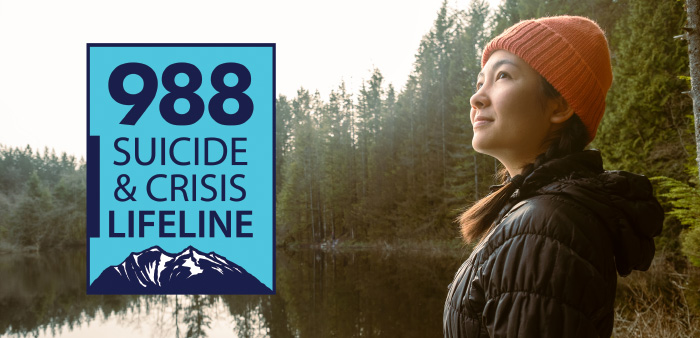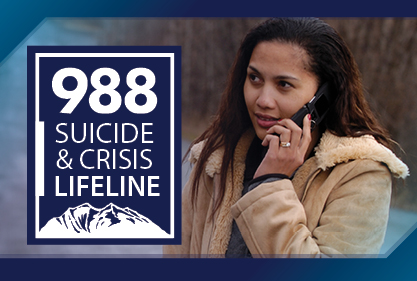988 Suicide & Crisis Lifeline
A 24/7 suicide prevention phone service with confidential crisis counseling
Overview
Dialing or texting 988 is a direct connection to compassionate care and support for anyone experiencing suicidal thoughts, who is at risk of suicide, or who is struggling with emotional distress. The Lifeline is free and confidential, with operators that treat callers with respect and listen without judgment.

Who qualifies?
Anyone. No matter your circumstances, there is no wrong door when accessing the Lifeline. 988 can be used by anyone, any time, free of charge. If you are calling about a friend or family member who is in distress, the person on the phone will walk you through how to help and provide resources.
How do I use 988?
If you are in crisis or suicidal and call 988 you will talk to a highly trained and compassionate call center professional. All calls are routed to a call center where a crisis counselor will provide confidential support 24 hours a day, 7 days a week for anyone of any age, including non-English speakers and those who are deaf or hard of hearing.
You typically will be greeted by an automated system and selection of prompts including options for Veterans, Spanish speakers, and support for youth and young adults. A trained crisis counselor will answer the phone and assess the situation and risk to determine how to best respond in order to keep the caller safe. Calls may last for as long as the caller needs to talk through the situation. In rare cases, the crisis counselor might need to alert local law enforcement to make sure a person is safe. In many cases a follow-up call will occur within an agreed upon time frame.
Resources
Forms
Related Education
- For Spanish-language support, text “AYUDA” to 988, or chat linea988.org/chat
- For videophone services, dial 988 directly on videophone to connect with crisis counselors who can communicate in American Sign Language (ASL)
- Select “ASL NOW” from 988lifeline.org for service in American Sign Language
